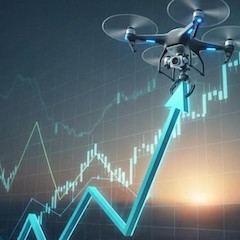
FED RECAP: What Markets and The Media Aren’t Telling You
On Tuesday, March 19, we offered readers the following forecast of what would happen at the FOMC meeting yesterday:
“On Wednesday, the Fed will leave its target rate for fed funds unchanged. That decision will keep the federal funds target at 5.50% as set at the July 26, 2023 FOMC meeting. Over the course of sixteen FOMC meetings beginning March 16, 2022, we’ve been correct in all of our forecasts including the policy rate pause that began last September. We’re confident we’ll be correct on Wednesday also.”
Here’s What Actually Happened
The Fed did keep the fed funds rate unchanged as we projected. That makes seventeen Fed meetings in a row going back to March 16, 2022, when we got the Fed forecast right. Events remain uncertain from here, but it’s so far, so good for our forecasting.
Here’s the text of part of the Fed’s press release issued at 2:00 pm EDT yesterday:
“The Committee seeks to achieve maximum employment and inflation at the rate of 2 percent over the longer run. The Committee judges that the risks to achieving its employment and inflation goals are moving into better balance. The economic outlook is uncertain, and the Committee remains highly attentive to inflation risks. In support of its goals, the Committee decided to maintain the target range for the federal funds rate at 5-1/4 to 5-1/2 percent. In considering any adjustments to the target range for the federal funds rate, the Committee will carefully assess incoming data, the evolving outlook, and the balance of risks. The Committee does not expect it will be appropriate to reduce the target range until it has gained greater confidence that inflation is moving sustainably toward 2 percent. In addition, the Committee will continue reducing its holdings of Treasury securities and agency debt and agency mortgage-backed securities, as described in its previously announced plans. The Committee is strongly committed to returning inflation to its 2 percent objective.”
The FOMC vote in favor of this policy statement was unanimous. This meeting included the notorious “dots,” technically the Summary of Economic Projections (SEP) offered by 19 Fed governors and regional reserve bank presidents and presented in graphical form as a dot plot.
Jay Powell’s press conference following the FOMC meeting was notable for how little was said about interest rate policy by Powell and how few questions there were from the media on that topic. The press conference wandered into various other topics including quantitative tightening (QT), a possible taper of QT, central bank digital currencies (CBDCs), and Fed transparency. Those are interesting topics, but none had anything directly to do with interest rate policy.
Regarding the policy rate, Powell repeated much of what he said last January and in his more recent testimony before Congress. Powell said: “The economy has made considerable progress toward our dual mandate” to promote low unemployment and maintain price stability. But in almost the same breath he said, “Inflation is still too high.” He then added, “Inflation … remains above our longer run goal of 2 percent.”
On the positive side, Powell said, “Economic activity has been expanding at a solid pace.” And he noted that, “We did mark-up our growth forecast” in reference to the SEP dots.
To Cut or Not to Cut
So, we’re back to the conundrum that has faced the Fed since they stopped raising rates last July: The Fed is reluctant to cut rates because it might fuel inflation. At the same time, the Fed is reluctant to keep rates too high because it might cause recession. Powell said this explicitly: “The risks are really two-sided here. … If we ease too early, we could see inflation come back… If we ease too late, we could impact the economy negatively.”
The policy implications of this dilemma are fairly clear. The Fed will not cut rates at their next meeting on May 1. Powell said, “We didn’t make any decisions with regard to future meetings today.” If the Fed had decided to raise rates in May, some signal would have been given. Powell made it clear that the FOMC needs more data before making a rate cut decision. “What we’re looking for now is confirmation that that progress will continue. … We’re looking for more good data and we would certainly welcome it.”
At the same time, the SEP indicated three rate cuts before the end of 2024 and Powell concurred with that view. After May, there are only five FOMC meetings remaining in 2024: (June, July, September, November, December).
This schedule suggests the following policy path: No rate cut in June because the Fed is still looking for inflation reduction confirmation. A rate cut of 0.25% in July. No rate cut (a “pause”) in September because it’s too close to Election Day and the Fed wants to appear independent. Then 0.25% rate cuts in November and December. That would meet the Fed’s three-rate-cut forecast, give inflation time to cool off, avoid an election landmine, and still cut rates fast enough to avoid a recession. That’s Powell’s winning parlay.
Gold was the Biggest Winner
Markets liked what they heard. The Dow Jones index was up 1.03% on the day. The S&P 500 rose 0.89%, and the tech-heavy NASDAQ Composite rose 1.25%. It’s fair to say stock markets focused on the implied promise of three rate cuts before the end of the year and not as much on whether the first cut came in June or July (markets are betting on June at the moment).
Also, the dollar price of gold took off like a rocket as soon as the Fed announcement was made. Gold was trading at $2,160 per ounce at 1:30 pm EDT just ahead of the Fed decision at 2:00 pm. Gold briefly touched $2,230 per ounce around 6:30 pm (a new all-time high) before settling down around $2,205 per ounce in early Asian trading, a 2% gain on the day.
What You Won’t Hear in Financial Media
With the Fed having finessed the media and markets offering a vote of confidence, what could possibly go wrong? Everything.
Behind Powell’s carefully laid plans and the markets’ Goldilocks-type assumptions lies a huge fallacy. The assumption is that interest rates and inflation have a reciprocal relationship. Timing aside, markets and the Fed both assume that current high interest rates will tame inflation, and that will pave the way for rate cuts, stronger growth, and higher stock prices. But there’s no evidence for this.
The Great Depression (1929-1933) was a period of low interest rates and unprecedented deflation. The Great Inflation (1977-1981) was a period of high interest rates and record high inflation. History teaches that there is no inverse correlation between interest rates and inflation. In the 1930s, rates chased inflation down. In the 1970s, rates chased inflation up. In both episodes, the Fed did not lead the way, they followed. The Fed was not in charge. Markets and individual psychology were in charge.
In our pre-meeting report on Tuesday, we made the same point. Here’s what we said about inflation:
When inflation (measured monthly by CPI on a year-over-year basis) dropped from 9.1% in June 2022 to 3.0% in June 2023, the Fed was ready to declare victory. The Fed’s goal was still 2% annualized inflation, but progress from 9.1% to 3.0% was so dramatic that 2.0% seemed well within reach. It was around that time (July 2023) that the Fed hit the pause button on further rate hikes. Since then, the inflation news has been consistently bad for the Fed. Here’s the tale of the inflation tape using the Consumer Price Index on a year-over year basis:
| Date | CPI (year-over-year) |
|---|---|
| June 2023 | 3.0% |
| July 2023 | 3.2% |
| August 2023 | 3.7% |
| September 2023 | 3.7% |
| October 2023 | 3.2% |
| November 2023 | 3.1% |
| December 2023 | 3.4% |
| January 2024 | 3.1% |
| February 2024 | 3.2% |
(The CPI data for March 2024 will be released on April 10th).
Several facts jump out immediately from this most recent nine-month time series. The first is that inflation is not going down. It’s higher today than it was last month and it’s higher than it was ten months ago. It has bounced around a bit, hitting 3.7% last September and then settling down to 3.2% today. Still, the best that can be said is that inflation is in a range with a central tendency of about 3.3%. It is stuck in that range and is not trending toward the Fed’s stated goal of 2.0%.
Our Conclusion
We could be looking at the worst of all possible worlds. We could have slowing growth and higher unemployment and higher inflation at the same time.
When we pointed to higher stock and gold prices, we did not mention oil. In fact, oil prices have surged from $68.50 per barrel on December 12, 2023, to a high of $83.50 on March 19, 2024. That’s a 22% price increase in just over three months. Most of that price increase has not yet worked its way through the supply chain of refiners, and distributors to the price of gas at the pump. Higher gas and diesel prices also impact the price of everything that relies on petrochemical inputs and transportation.
In short, there’s a good chance that inflation will go higher in the months ahead, putting an end to the Fed’s (and markets’) rate cut dreams. Still, higher rates will weigh on the economy exactly as Powell said at his press conference. Stagflation, anyone?
The next Fed meeting is April 30 – May 1, 2024. A lot will happen between now and then including more data on inflation, unemployment, and economic growth that will affect the Fed’s decision-making process. We’ll be watching all of it carefully and bringing you the latest analysis as events unfold.
Want More Crisis Trader with Jim Rickards?
Do you like this content? Would you like to know more? Because we have this and much more to share with you. Get started today!









